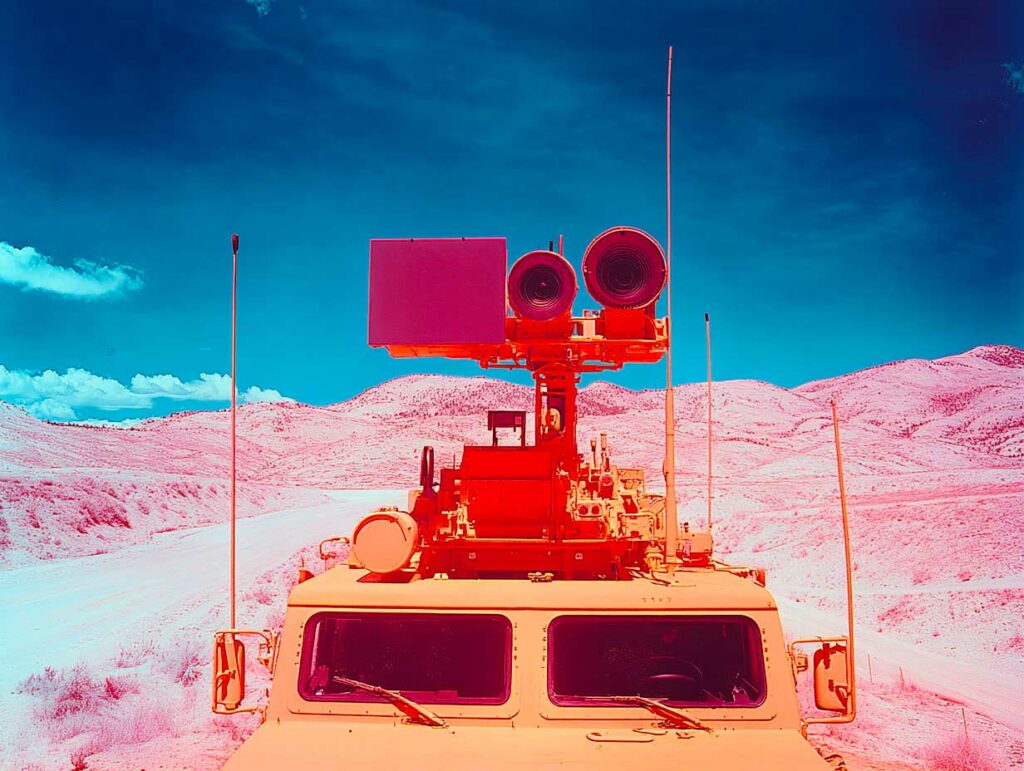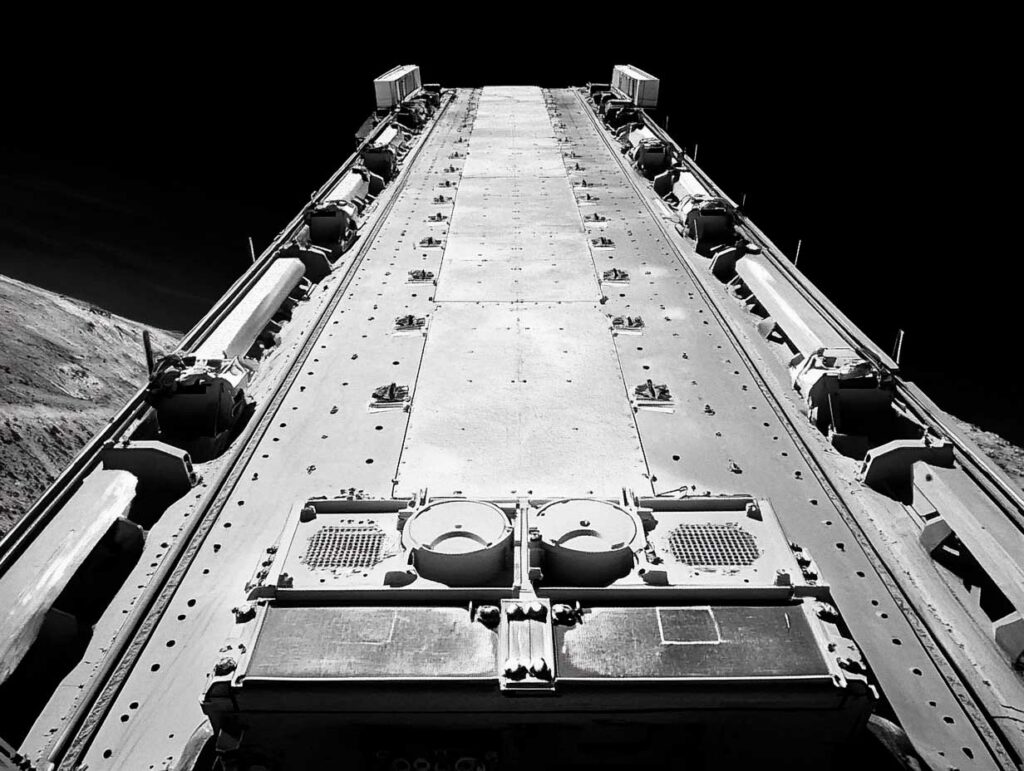
The Israeli army destroys a Matla-ul-Fajr radar, a pillar of Iranian air defense. Tehran responds with tactical decoys.
Israel recently destroyed an Iranian Matla-ul-Fajr radar, a VHF system designed to detect low-radar-signature targets such as stealth aircraft and cruise missiles. The strike is part of Operation Rising Lion, which aims to disrupt Iran’s air defense infrastructure. The targeted system, which is mobile and protected against jamming, was a strategic component of Iran’s long-range detection architecture. At the same time, Iran used decoys, mock-up missile systems, to divert Israeli strikes. This tactic aims to exhaust Israeli precision munitions while protecting operational systems. The confrontation highlights a technological war of attrition between an air strike force with electronic superiority and an adversary that adopts strategies of dispersion and concealment.

The Israeli strike against the Matla-ul-Fajr radar
The strike announced by the Israel Defense Forces (IDF) targeted an Iranian Matla-ul-Fajr radar, a mobile VHF system developed in 2010. It is a military radar designed for long-range detection (up to 480 km) and early warning, capable of covering altitudes of up to 30 km. Its unique feature is that it operates in the VHF band, which offers increased capability for detecting targets with a low radar cross section (RCS), such as F-35 stealth aircraft.
The system is mounted on trailers and incorporates phased array antennas, control units, and secure communication links. The Matla-ul-Fajr also has ECCM (Electronic Counter-Counter Measures) capabilities, allowing it to switch frequencies across more than 100 VHF channels, making it less vulnerable to electronic jamming.
According to Iranian sources, its most advanced version, the Matla-ul-Fajr 2, is a solid 3D radar manufactured by SAIRAN in collaboration with the University of Technology in Isfahan. It enables three-dimensional mapping of threats, although its accuracy decreases at short ranges. This type of radar is central to Iran’s air defense network, especially for detecting stealth intrusions in a degraded electromagnetic environment.
The targeted attack demonstrates not only the precision strike capability of Israeli aircraft, but also their mastery of electronic warfare to penetrate defended airspace. By destroying this radar, Israel has deprived Iran of a critical element of its radar surveillance, thereby reducing its ability to intercept or even detect a surprise attack.
Electronic warfare and stealth detection tactics
The destruction of the Matla-ul-Fajr radar reveals a technological clash between two opposing military doctrines. On the one hand, Israel favors preventive strikes, supported by stealth aircraft and superiority in jamming enemy radars. On the other hand, Iran is attempting to compensate for its technological lag with a proliferation of mobile VHF radars, which are less sensitive to stealth.
The VHF (Very High Frequency) spectrum, between 30 and 300 MHz, is particularly effective at detecting stealth aircraft, as their absorbent surfaces are optimized for higher bands (S, X, Ku). Thus, even if VHF radars lack resolution, they can reveal the presence of a stealth target and alert other defense systems.
Israel, aware of this threat, systematically targets these installations. By neutralizing a Matla-ul-Fajr, it eliminates a sensor that reduces the stealth advantage of its F-35I “Adir” fighters. These aircraft are the spearhead of Israeli long-range strikes. Their effectiveness relies on not being detected by enemy radar systems.
This balance of power also highlights the superiority of Israel’s network-centric warfare. Thanks to real-time integration of targeting data, the IAF can identify, locate, and strike Iranian radar systems before they become fully operational, thereby undermining Tehran’s radar integration efforts.
Iran’s use of decoys: an asymmetric deterrence strategy
Faced with the intensity of Israeli air strikes, Iran has adopted a strategy of military deception: the deployment of missile launcher dummies. Videos released by Israel show strikes on targets believed to be ballistic missile batteries. However, the absence of secondary explosions raises doubts. These observations suggest that some targets were empty or even fake.
This technique, widely documented in Ukraine and Syria, is based on depleting the enemy’s precision-guided munitions. By destroying mock-ups, Israel is wasting missiles costing up to $100,000 each, while Iran keeps its real platforms.
This modus operandi requires realistic replicas that mimic the thermal, radar, or optical signature of the original equipment. The fact that some strikes were directed at these decoys tends to prove that the IAF was momentarily deceived. However, this strategy remains risky: early detection of the deception by satellite or drone could reduce its deterrent effect.
For Iran, these decoys serve to buy time, disperse Israeli strike capabilities, and reorganize its operational units. However, their actual performance remains limited. A decoy is only effective if it is part of an overall strategy of mobility, camouflage, and redundancy of defense capabilities.

Towards a technological war of attrition in the skies over the Middle East
With more than 170 targets struck in less than 72 hours, Israel is waging a systematic campaign to erode Iran’s capabilities. The intensive targeting of command centers, radars, and launch systems suggests a desire to permanently disrupt Iran’s defensive architecture.
This strategy relies on speed, precision, and air superiority, made possible by a dense network of sensors, satellites, refueling aircraft, and stealth fighters. Conversely, Iran is banking on resilience, decoys, unit mobility, and sporadic retaliatory strikes.
The material and operational costs are high for both sides. Each Israeli missile costs tens of thousands of euros, while Iran loses years of technological investment with every radar or command center destroyed. The war is therefore becoming asymmetrical but costly.
Finally, the regional context increases the risks: growing tensions with Hezbollah in Lebanon, Russian and Chinese interference in the region, and the limitations of Iran’s air defense capabilities in the face of a long and sustained campaign. If Operation Rising Lion continues, Iran is likely to intensify its use of electronic warfare, cyberattacks, and indirect strikes via its regional partners.
War Wings Daily is an independant magazine.